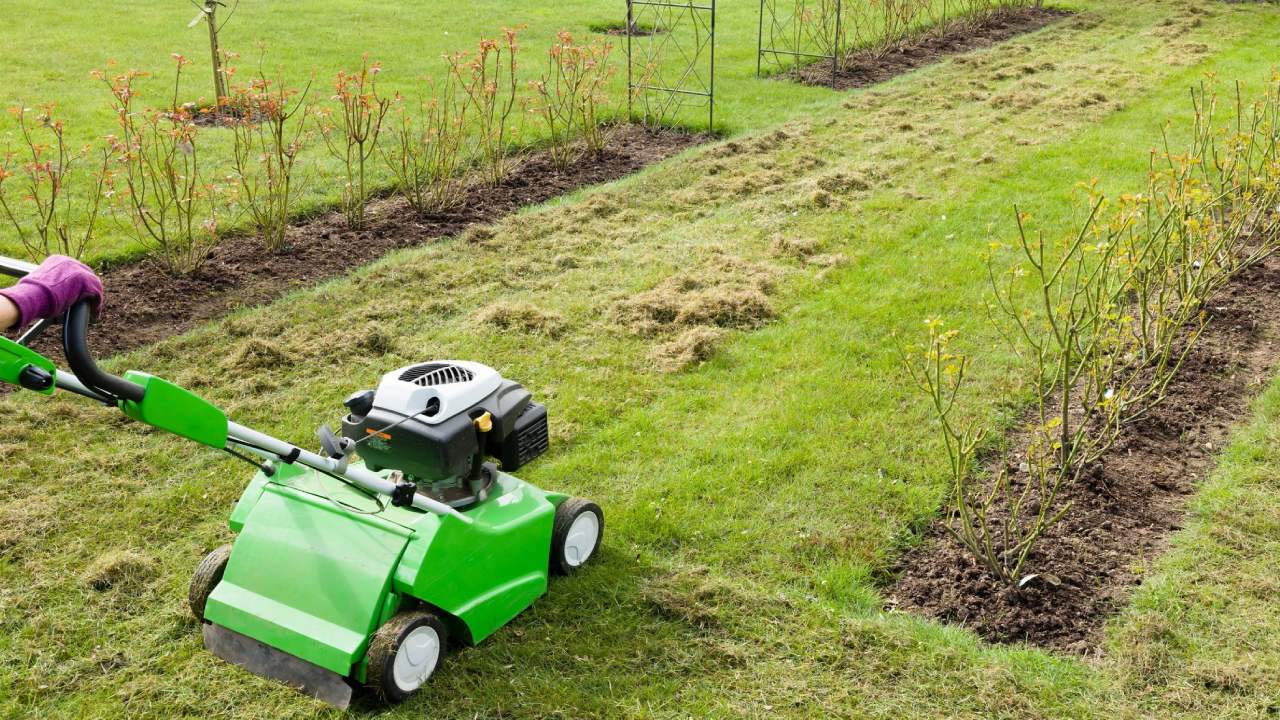| CALL US TODAY! | Mississauga (905) 625-4664 |
5170 Dixie Rd Mississauga, ON L4W 1E3 |
• | Scarborough (416) 299-4960 |
48 Continental Place Scarborough, ON M1R 2T4 |
SITE MAP |
How to use a dethatcher on your lawn
A vital aspect of lawn maintenance is dethatching, which involves removing the layer of dead grass and debris that accumulates on the surface over time. If you’re like many homeowners, you’ve probably never used a dethatcher. So, if you’re considering dethatching your lawn, here’s a simple guide.

Why you should dethatch your lawn
When organic matter builds up on your lawn, it prevents air, water and nutrients from reaching the grass roots, which can lead to several problems, including:
• Poor drainage
• Weed growth
• Disease
• Brown patches
Dethatching helps improve airflow, allows for better absorption of nutrients and encourages new grass growth.
When to dethatch your lawn
Dethatch your lawn in the spring or fall when the grass is actively growing. This helps the grass recover more quickly from the dethatching process. Avoid performing this task during the summer heat or when the grass is dormant.
Before you dethatch: Prepare your lawn
Start by mowing your lawn to a shorter height than usual, around 2.5 to four centimetres. Next, remove any visible debris like branches, rocks or large clumps of dead grass. If your lawn has bare spots, consider overseeding them after dethatching. Lastly, water your lawn thoroughly a day before dethatching to ensure the soil is adequately hydrated.
Choose the right dethatching equipment
There are two main types of dethatching equipment: a manual dethatching rake and a power dethatcher. A dethatching rake will suffice for a smaller lawn, but larger lawns may require a power dethatcher. Ensure that the blades or tines of the dethatcher are in good condition and set to the appropriate depth for your lawn. For power dethatchers, adjust the depth according to the manufacturer's instructions, typically 0.5 to 1.3 centimetres deep.
Dethatching process
Begin dethatching by making parallel passes over your lawn, working back and forth. Overlap each pass slightly to ensure complete coverage. If the thatch layer is quite thick, you may need to do two or more passes. Make the second pass perpendicular to the first. Then make diagonal passes so that you’re always hitting the thatch at a different angle.
For dethatching rakes, use a vigorous back-and-forth motion, raking up and removing the debris as you go.
After you dethatch
Once the entire lawn is dethatched and the debris is removed, water it thoroughly and fertilize with a high-nitrogen fertilizer and put some seed down on bare patches. Mow your lawn at its recommended height.
Lawn mowers and turf equipment in the GTA
At Hitch City, we carry an unrivalled inventory of lawn mowers and turf equipment for residential or commercial use. We also offer repair and maintenance services for dethatchers and all types of landscape equipment. Contact us today to learn more about our lawn and garden tools and services.
